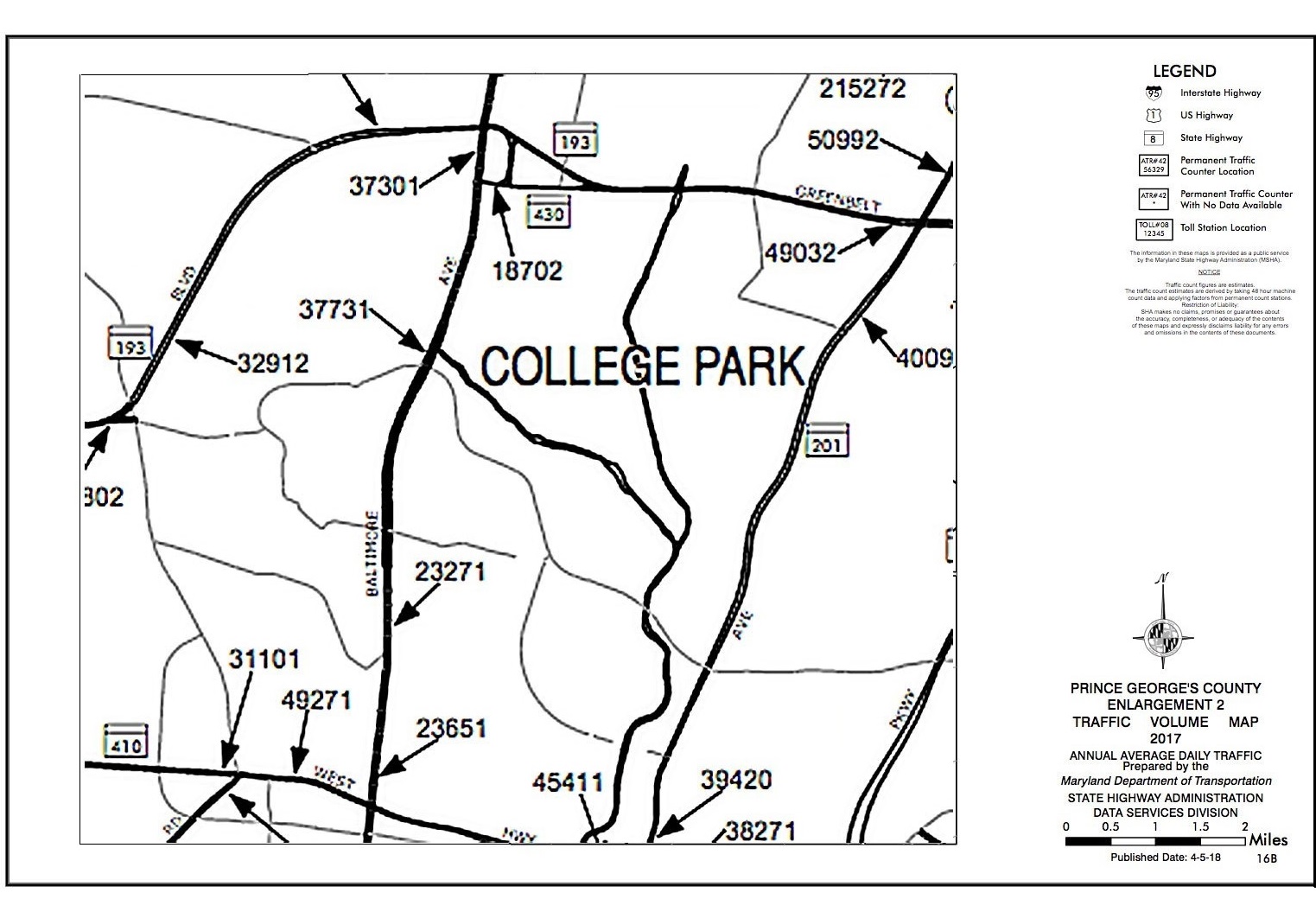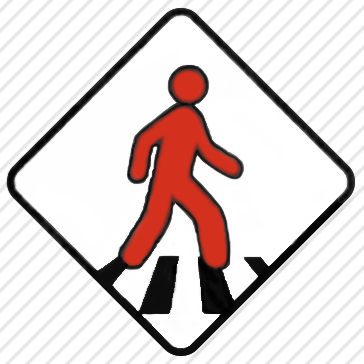Prince George's County leads the Washington area in transit fatalities, according to the fall 2018 edition of the Metropolitan Washington Council of Governments' Street Smart traffic safety campaign.
The data records 99 transit fatalities throughout the county in 2017. Of those 99 total incidents, 24 were pedestrian fatalities. Maryland's Charles County and Fairfax County in Virginia were tied for second place, each with 35 fatalities recorded. The statistics are summarized in the chart below, with the final column representing total transit fatalities for the Washington region.
Where do transit fatalities occur in the Washington area?
In 2017, Prince George's County led the Washington metropolitan area in transit fatalities.
Data collected by The Metropolitan Washington Council of Governments' Street Smart campaign.
The Street Smart campaign has been compiling data and raising awareness on pedestrian safety in greater Washington since 2002. Their website reports a 27% increase in pedestrian fatalities nationwide between 2007 and 2016, and a regional aggregate of 27% for pedestrian and cyclist deaths in and around Washington out of all reported transit fatalities in 2017.
The map below provides context on some of the areas where these statistics are reported and examines factors that may contribute to higher or lower rates of pedestrian fatalities.
Despite the high number of pedestrian fatalities reported in Prince George's county, officials in College Park are optimistic about a net decrease in pedestrian incidents on Baltimore Avenue—also known colloquially as "Route One"—thanks to the installation of a traffic median in the middle of the street and ongoing education and enforcement efforts.
The University of Maryland—an institution with 30,000 undergraduate students and 10,000 graduate students as of December 2018—is located due west of Route One. With a large campus community that makes extensive use of the Route One roadway, the area has seen a notable quantity of pedestrian traffic incidents over the years.

A pedestrian in College Park crosses Baltimore Avenue westbound, in the direction of the University of Maryland campus, Dec. 10. (Horus Alas)
Given that 30% of pedestrian transit fatalities within the Washington area take place inside Prince Geroge's County—as shown in the chart below—the city hosting the state's flagship university should be interested in mitigating those incidents.
Which areas have the most pedestrian fatalities?
There were 79 pedestrian fatalities reported throughout the Washington region last year.
Data collected by The Metropolitan Washington Council of Governments' Street Smart campaign.
Paulette Jones, Public Information Officer at the county's Public Works and Transportation division, cited an outreach approach emphasizing four "e"s of safety: "engineering, education, enforcement and emergency services" in an email. She described the strategy as a way to improve public safety along roadways.
The stretch of Route One running south of this university's campus is considered a "high crash [corridor]," Jones wrote. She specified that high crash corridors are designated by the Maryland Department of Transportation's State Highway Administration as one-mile segments of road with "five or more crashes in a five-year period.
The State Highway Administration's data for 2017 records average daily traffic of 37,301 vehicles near the intersection of Route One and Campus Drive, making it among the busiest in the county.

A Maryland Department of Transportation State Highway Association average daily traffic map for Prince George's County in 2017. The immediate vicinity of College Park and the Route One corridor have been emphasized. Obtained via the SHA's Traffic Maps by County.
Nevertheless, officials from MDOT SHA report a drop in traffic incidents along Route One in recent years.
Charles Glischar, Media Relations Manager for MDOT SHA, wrote in an email, "crashes have been decreasing on US 1... After experiencing fatal pedestrian and bicycle crashes in 2013 and 2014, no pedestrian or bicycle crashes occurred in 2015 and 2016."
Glischar said that since 2015, only one pedestrian fatality had been confirmed in a 1.5-mile segment of road along Route One between Knox Road and University Boulevard. Pedestrian and cyclist injuries have also decreased in the area since 2014, when seven incidents were reported. There were three reported injuries in 2015 and 2017, and two in 2016.
Much of the fatality decrease in the area, according to Prince George's County Police Department officers, stems from the installation of a black metal median dividing Route One in half near the intersection with Knox Road.
Pedestrians on Route One
Despite high level of incidents in the county, officials say the Route One corridor is seeing fewer pedestrian fatalities and injuries in recent years.
Data provided by the Maryland Department of Transportation State Highway Administration.
Major Chris Price, Commander of PGPD's Special Operations Division, said that since August 2015, his unit had investigated 58 pedestrian fatalities. "Only one of these has been in College Park, in October of last year," he said.
"As of late, College Park has not seen as many crashes and fatalities," Price said. "One of the biggest things we're attributing it to is the installation of the barriers and medians along Route One. It makes it harder for pedestrians to cross illegally."
Although Price could not remember exactly when the medians were installed, he said it had been "at least two years."
Along with the medians, Price stressed the value of education in promoting pedestrian safety in the area.
"We have officers out on the corner handing out pamphlets and flyers, especially to students walking around College Park," he said.
As of this point in 2018, no new pedestrian fatalities have been reported along Route One. With continued education and enforcement, the roadway is on track to become safer for the entire campus community.

Pedestrians and vehicles move along the east end of the University of Maryland campus toward the intersection of Baltimore Avenue and College Avenue in College Park Dec. 3. (Horus Alas)

